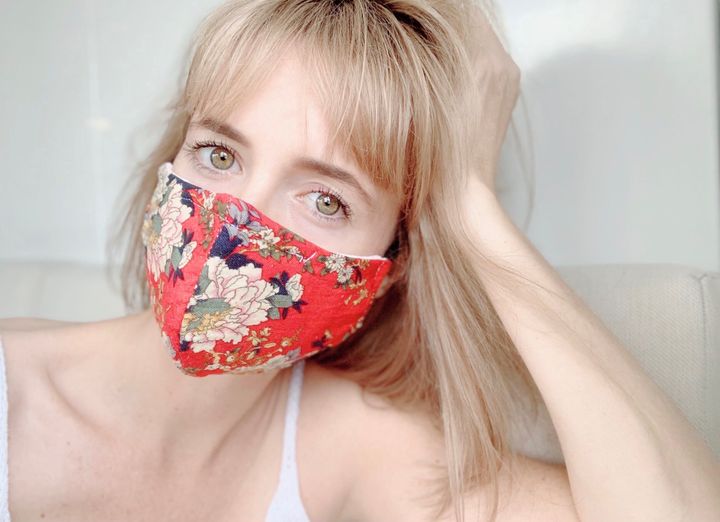
There’s a distinct breath-stealing, gut-punch feeling in the morning moment when grief comes barging in before your eyes even adjust to the light of a new day.
It’s the heaviness of emptiness — the weight of a void in your life where something that mattered to you used to exist.
I woke up with that feeling on March 12.
I was supposed to spend the day tying up loose ends and packing for an Antarctica assignment, but the World Health Organization had just declared a global pandemic less than 24 hours before and countries around the world were increasingly implementing travel restrictions. The dangers of catching and spreading the coronavirus were becoming clearer, and the risks of canceled flights and closed borders were suddenly greater. So a few hours after the announcement, on the eve of my departure, I decided to postpone.
Now, instead of catching my flight to Ushuaia — coincidentally dubbed the “City at the End of the World” for its southernmost position at the tip of Argentina — I was scrolling a newsfeed filled with posts about empty store shelves and impending lockdowns, wondering whether I wasn’t already witnessing the end of the world right here from home.
I still had deadlines to meet, so I sat down to work as if it were any other Thursday. But the gnawing heaviness persisted for hours, then days, intermittently drowned out only by the voices of people I was interviewing over the phone. Each time I hung up, the heaviness returned. And when I caught my mind drifting in the direction of despair, I remembered the last time I’d experienced similar all-consuming emotions.
A year ago, almost to the exact day, a friend was tragically killed — along with all of the other 156 people on board the Ethiopian Airlines flight that crashed shortly after takeoff. He had been my first roommate in a new city, at a pivotal point in my life when I had taken the leap to live in Jordan. He was kind, selfless, and humble. He had a quirky sense of humor and a huge heart.
And like so many of the passengers on that ill-fated flight, he had dedicated his time to humanitarian causes. He was working with refugees in Jordan when I first met him in 2017, and he was en route to deliver a training in Kenya for his job with another humanitarian organization when the plane went down on March 10, 2019. He didn’t deserve such a horrific end to such a sweet existence.
His death was like dynamite — it rocked my foundational understanding of everything I thought I knew about life and left sad, scattered fragments in its wake. But I didn’t allow myself time to grieve immediately after. Instead, I tried to power through and produce work at my usual pace — and that had a devastating impact on my mental and physical health.
So this year, when productivity and marketing emails started streaming in after the pandemic announcement, proposing all the ways we should maximize our time, I furiously deleted them and unsubscribed to anyone insisting that I find ways to fill my days. I wasn’t interested in “apps to turn your phone into a productivity machine.” I didn’t need reorganizing tips from Target or “habits to dramatically improve productivity.” I wasn’t looking for life planning workshops, shoes to WFH in or tips for how to “clean that dirty liver.” (But I do have a lot of questions: Who is life planning when we can’t even leave the house? Why would anyone wear shoes while working from home? And who are these people up in my inbox calling my liver dirty?)
I didn’t need a Pinterest project or any other fill-my-time, fix-my-life thing people were peddling. I needed a chance to mourn.
This time, it wasn’t a friend’s death that initially prompted the grief I was feeling (though I have since lost a colleague to COVID-19 and my grandfather to other health issues). It was the omnipresent layers of loss we were suddenly and globally submerged in: the daily death tolls blasting across our screens, swift shutdowns of businesses, the absence of physical connection, the abrupt loss of our pre-pandemic lives.
For some, like front-liners and other essential workers, there is the increased risk and demands of additional hours and isolation from loved ones. For others, including teachers and students, there is the loss of the in-person communities they cherish. For many, and especially those without access to support or health care, there’s a genuine concern about starvation and safety. For everyone, the coronavirus canceled life as we knew it. For these reasons and so many others, it’s natural to feel a deep need to grieve.
But while the world is locked down, many of our usual outlets for processing emotions — such as get-togethers, gym activities, time outdoors and travel — are restricted or shut down entirely.
So I decided that if I’m required to shelter-in-place with grief, I’d better get comfortable with it.
Recognizing familiar feelings of grief early on helped me avoid descending to the same depths of darkness I had plummeted into following my friend’s death last year. This time around, I knew that pushing through projects wouldn’t fast-track my grief — it would only prolong it.
And while I’d love to pick up a paintbrush or finish writing the TV series that’s been on my to-do list for the past two years, that’s not feasible for me and many others in this moment. The pandemic hasn’t evenly distributed a surplus of time, money and energy to everyone. Some of us are now spending more effort and hours chasing down work to replace income lost and scrambling to ensure our families are fed something — so we might not have the energy or resources at the end of the day to prepare a picture-perfect #coronachef meal.
Others are putting in long hours at essential jobs and can’t even step foot into their own houses, let alone have the chance to tackle a home improvement project. Grief, fear and trauma can dramatically deplete energy and creativity, so even folks who do have extra time may find they don’t have the desire to dive into a #quarantineproject. (There’s nothing wrong with doing those things if you’ve got the time and resources. Just understand that not everyone does, and no one should be expected to operate at their pre-pandemic pace.)
Last year I learned that fighting grief was futile, so instead of searching for distractions or escape, this time I sat still and acknowledged it. I let the anger, heartbreak, disappointment, sadness and fear flow through me. I sobbed between interviews. I screamed at the mirror. I sprinted in the street, trying to convince my legs to hurt more than my heart. I let my feelings bubble up instead of shoving them down. You don’t realize how much mental energy you’re expending on resistance until you see how much freer you feel after acceptance.
Grief is not linear or logical, and sometimes it comes in waves. You can’t follow a checklist or sensical steps to some specific endpoint, and there’s no “right way” through it. Over the course of the last year, I came to understand that grief isn’t a constant — which is both good and bad news: It’s not the same forever, yet it never fully goes away. Some days it’s dormant, and other days it storms in and sends tears rushing down your face.
Productivity can’t protect us from it. But I believe acceptance of grief can diminish the element of surprise. When we make the conscious decision to accept it in whatever form it shows up, we sap some of its strength and gain back a bit of our serenity.
Do you have a compelling personal story you’d like to see published on HuffPost? Find out what we’re looking for here and send us a pitch!
- Stay up to date with our live blog as we cover the COVID-19 pandemic
- What you need to know about face masks right now
- How long are asymptomatic carriers contagious?
- Lost your job due to coronavirus? Here’s what you need to know.
- Can someone outside of your household quarantine with you now?
- Everything you need to know about coronavirus and grief
- The HuffPost guide to working from home
- What coronavirus questions are on your mind right now? We want to help you find answers.
- Everyone deserves accurate information about COVID-19. Support journalism without a paywall — and keep it free for everyone — by becoming a HuffPost member today.
